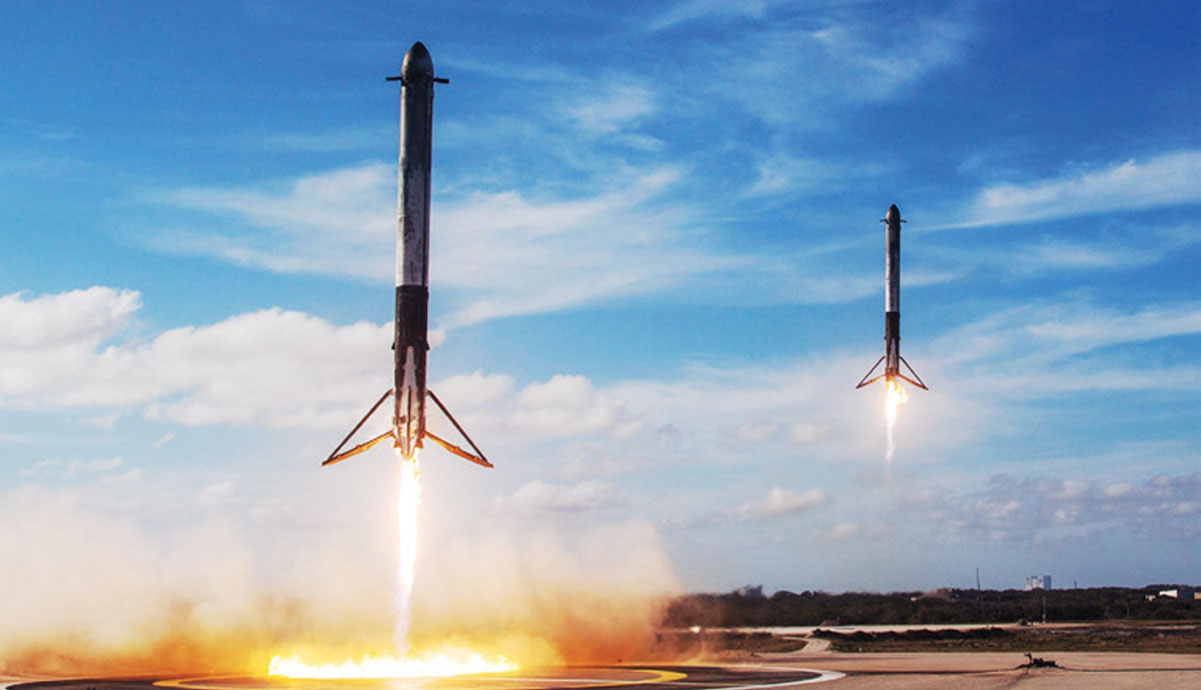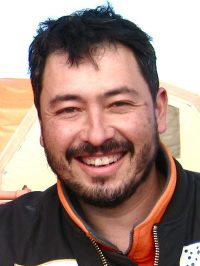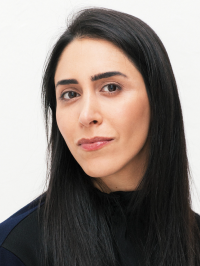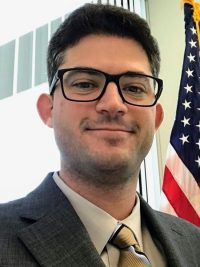LaunchPad Talks

LaunchPad talks are like ‘TED-talks’ for space, and consist of brief 7-minute, high-level and engaging talks on novel and innovative work in space exploration and development today, and are geared towards a general space audience. A fixture of ISDC since 2015, the LaunchPad has attracted an impressive array of speakers and projects in previous years, from astronauts to entrepreneurs to moonshot ideas.

Track Chair:
Dr. Shawna Pandya
Life Sciences Team Lead, Association of Spaceflight Professionals
Curator, ISDC LaunchPad
Presentation: Introduction to LaunchPad Talks
Track Chair:
Dr. Shawna Pandya
Life Sciences Team Lead, Association of Spaceflight Professionals
Curator, ISDC LaunchPad
Presentation: Introduction to LaunchPad Talks
Speakers


Dr. Pascal Lee
NASA Ames
Mars Institute
Dr Pascal Lee is a planetary scientist with the Mars Institute, the SETI Institute, and NASA Ames Research Center in Mountain View, California. His research focuses on water on Mars, the Moon, and Mars’ moons, Phobos and Deimos, and on planning their future exploration by humans and robots. Dr Lee has led over 30 expeditions to the Arctic and Antarctica for planetary analog studies. He is director of the NASA Haughton-Mars Project, the leading Moon/Mars analog field research project on Devon Island,
High Arctic. Dr Lee recently led the Northwest Passage Drive Expedition, the subject of the award-winning documentary film Passage To Mars (2016). His first book, Mission: Mars, won the 2015 Prize for Excellence in children’s science books from the American Association for the Advancement of Science. In his free time, Pascal likes to be walked by his dogs, fly, and paint. He is an FAA-certified helicopter commercial pilot and flight instructor, and an artist member of the International Association of Astronomical Artists.
Presentation: Drones for Earth, Moon and Mars Exploration
Dr. Pascal Lee
NASA Ames
Mars Institute
Dr Pascal Lee is a planetary scientist with the Mars Institute, the SETI Institute, and NASA Ames Research Center in Mountain View, California. His research focuses on water on Mars, the Moon, and Mars’ moons, Phobos and Deimos, and on planning their future exploration by humans and robots. Dr Lee has led over 30 expeditions to the Arctic and Antarctica for planetary analog studies. He is director of the NASA Haughton-Mars Project, the leading Moon/Mars analog field research project on Devon Island,
High Arctic. Dr Lee recently led the Northwest Passage Drive Expedition, the subject of the award-winning documentary film Passage To Mars (2016). His first book, Mission: Mars, won the 2015 Prize for Excellence in children’s science books from the American Association for the Advancement of Science. In his free time, Pascal likes to be walked by his dogs, fly, and paint. He is an FAA-certified helicopter commercial pilot and flight instructor, and an artist member of the International Association of Astronomical Artists.
Presentation: Drones for Earth, Moon and Mars Exploration





Rahul Raghani
University of Southern California
Presentation: Swarms for In-Space Assembly of Large Structures
Rahul Raghani
University of Southern California
Presentation: Swarms for In-Space Assembly of Large Structures





Douglas Gage
XPM Technologies
Presentation: Better Life Support Sooner Please
Douglas Gage
XPM Technologies
Presentation: Better Life Support Sooner Please


Melodie Yashar
Space Exploration Architecture
Melodie Yashar is a designer, researcher and co-founder of Space Exploration Architecture (SEArch+), a group building upon a 10-year portfolio of academic space research and practice developing human-supporting concepts for space exploration. In 2015 SEArch+ was awarded the top prize in NASA’s Phase 1 Centennial Challenge for a 3D-Printed Habitat for their proposal, “Mars Ice House.” SEArch+ maintains ongoing collaboration with NASA Langley conducting feasibility studies for related ice habitat concepts. Melodie is team leader for SEArch+ / Apis Cor’s continued research developing functional prototypes for 3D-printed habitats. SEArch+ / Apis Cor has won first prize within Construction Level 1 and Construction Level 2 of NASA’s Phase 3 3D-Printed Habitat Competition, and fourth place in Virtual Design Level 1. Melodie teaches within the architecture department of Pratt Institute; courses have included studios part of the X-Hab Innovation Challenge for Human Centered Designs, a NASA project collaboration. Melodie has worked as a contractor specializing in human factors with the Human Systems Integration Division at NASA Ames. She received a Master of Architecture from Columbia University and a Master of Human-Computer Interaction from Carnegie Mellon University. She maintains ongoing research interests in the design of augmented environments, human-machine interaction, human performance studies, user experience, and systems considering the human body
Presentation: Construction Prototyping and Design Development for an Autonomously 3D-Printed ISRU Surface Habitat
Melodie Yashar
Space Exploration Architecture
Melodie Yashar is a designer, researcher and co-founder of Space Exploration Architecture (SEArch+), a group building upon a 10-year portfolio of academic space research and practice developing human-supporting concepts for space exploration. In 2015 SEArch+ was awarded the top prize in NASA’s Phase 1 Centennial Challenge for a 3D-Printed Habitat for their proposal, “Mars Ice House.” SEArch+ maintains ongoing collaboration with NASA Langley conducting feasibility studies for related ice habitat concepts. Melodie is team leader for SEArch+ / Apis Cor’s continued research developing functional prototypes for 3D-printed habitats. SEArch+ / Apis Cor has won first prize within Construction Level 1 and Construction Level 2 of NASA’s Phase 3 3D-Printed Habitat Competition, and fourth place in Virtual Design Level 1. Melodie teaches within the architecture department of Pratt Institute; courses have included studios part of the X-Hab Innovation Challenge for Human Centered Designs, a NASA project collaboration. Melodie has worked as a contractor specializing in human factors with the Human Systems Integration Division at NASA Ames. She received a Master of Architecture from Columbia University and a Master of Human-Computer Interaction from Carnegie Mellon University. She maintains ongoing research interests in the design of augmented environments, human-machine interaction, human performance studies, user experience, and systems considering the human body
Presentation: Construction Prototyping and Design Development for an Autonomously 3D-Printed ISRU Surface Habitat





Dr. Natalie Rens
Astreia
Presentation: Enabling Sustainable Human Life in Space with Artificial Intelligence
Dr. Natalie Rens
Astreia
Presentation: Enabling Sustainable Human Life in Space with Artificial Intelligence





Rohaan Ahmed
MDA Robotics
Presentation: Next Generation Robotics and Artificial Intelligence for Deep Space Gateway
Rohaan Ahmed
MDA Robotics
Presentation: Next Generation Robotics and Artificial Intelligence for Deep Space Gateway


Andrew Sullivan
University of Southern California
Presentation: EDEN: Extraterrestrial Distributed Ecoculture Network
Andrew Sullivan
University of Southern California
Presentation: EDEN: Extraterrestrial Distributed Ecoculture Network





Phillip Crume
Crume Industries
Presentation: Solaris, Part 3 of 4: Mega-scale Space Infrastructure and Becoming a Type I Civilization
Phillip Crume
Crume Industries
Presentation: Solaris, Part 3 of 4: Mega-scale Space Infrastructure and Becoming a Type I Civilization





Lauren Church
Paraboladies
Presentation: Pre-flight Medical Screening and Assessment in the Sub-Orbital Spaceflight Participant
Lauren Church
Paraboladies
Presentation: Pre-flight Medical Screening and Assessment in the Sub-Orbital Spaceflight Participant





Eleanor Frost
Paraboladies
Presentation: Pre-flight Medical Screening and Assessment in the Sub-Orbital Spaceflight Participant
Eleanor Frost
Paraboladies
Presentation: Pre-flight Medical Screening and Assessment in the Sub-Orbital Spaceflight Participant





Arushi Nath
Presentation: How can the Next Generation Hack Space Exploration?
Arushi Nath
Presentation: How can the Next Generation Hack Space Exploration?



